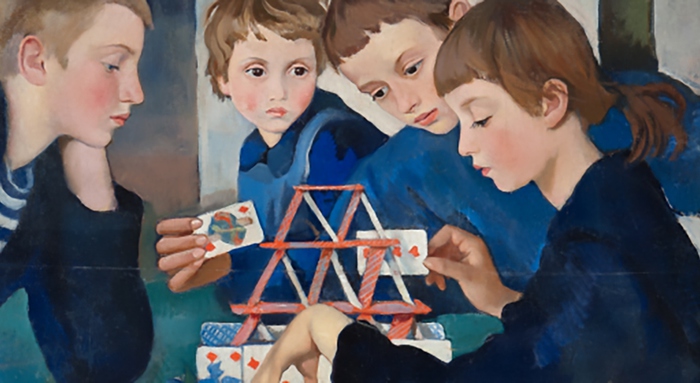PALAZZO REALE (MILAN) -
The invisibility of women in the art world is an axiom that can hardly be doubted.
From east to west, social conditions have made it difficult to form and many times oblivion has done the rest, as evidenced by the recent rediscovery of great personalities such as Artemisia Gentileschi - right now on show in London - or Frida Kahlo .
A huge gap, inversely proportional to the visibility of the female body in painting and sculpture of all times and all countries.
"A consequence of the social situation", reasoned Linda Nochlin at the end of the 1970s, one of the curators of "Women artists: 1550-1950", a historic exhibition held in Los Angeles
.
A reality to which Russia was partly an exception, in the very particular period of time preceding the October Revolution.
In those decades, in which the artistic avant-gardes saw the light, women had space, resonance and also roles of responsibility in some way equal to men, as was not the case at the time either in the US or in Europe.
Cultured women, who in many cases could also boast experiences abroad, most often in Picasso and Braque's Paris.
To this patrol of courageous artists and intellectuals, "the Amazons of the Avant-garde"
- according to a definition once again coined by the male world and which, not surprisingly, delineates its scope by circumscribing it in terms of exceptionality - is partly dedicated
the great exhibition that opens on 27 October in Milan in the spaces of Palazzo Reale, with over 100 masterpieces, many of which have never been seen in Italy, arriving from the Russian Museum in St. Petersburg.
Entitled "Divine e Avanguardie" and promoted by the municipality of Milan which included it in the city's cultural schedule The talents of women
, the exhibition traces the evolution of the female image in Russia in 8 large sections, from the golden madonnas of icons to the tsarinas cloaked in brocades, from the austere smiles of the empresses to the bourgeois interiors, to the marked faces of the peasant
women
who for the first time land on the canvases in the mid-nineteenth century, in the enlightened gazes of
Alexei Venetsianov
.
And then again in the stories on canvas by
Kazimir Malevic
who in the twenties of the twentieth century became passionate about the drama of the peasants crushed by the proletarian revolution.
Or in the gloomy interiors of
Abram Archipov
, with his tattered washerwomen who instead bring to mind Zola's desperate Paris.
To reach the women painters, sculptors, gallery owners, fashion designers, scenographers, animators of the cultural scene then in great ferment, at least up to the silencer imposed by Stalin, who in 1932 wanted socialist realism as the only form of art.
The idea, as can be seen from the beautiful essay signed in the catalog by the curator
Eugenia Petrova
, is in some way that of a re-reading of Russian history following the common thread of the female face to also arrive at a reflection on the evolution of roles.
Thus, as evidence of the moment of particular openness that the country experiences between the end of the 19th and the beginning of the 20th century, together with the portraits of the artists' wives and daughters, also those of the women who had made art a profession, from the poetess
Anna Achmatova
to the gallery owner
Nadezda Evseevna Dobicina.
A section dedicated to the family, with portraits of young people given in marriage for interest or those of widows left without means, seems to illustrate the many stories told by literary masterpieces, from Tolstoy to Dostoevsky.
There are also mothers, as well as a section entirely dedicated to the female body.
The last part, perhaps the most intriguing, is precisely the one that lights a beacon on the artists, not only Tamara de Lempicka
("now fashionable in Europe" as the curator points out) but many others, from
Natalija Goncharova
to
Olga Rozanova
, from
Ljubov
Popova
to
Alexandra Exster
and
Vera Muchina
.
Refined, intellectual, daring minds.
Strong personalities such as that of Goncharova, capable of drawing and influencing her audience, loved to the point that one of her exhibitions set up in Moscow in 1913 managed to attract over 12,000 visitors, with the organizers forced to reprint the catalog three times.
Yet, despite the fame achieved among contemporaries, "it was not they who determined the world glory of Russian art", Populova emphasizes.
In the contemporary art market, many of them are still undervalued
. Just considering the necessarily restricted selection of the works on display, one wonders why. Certainly, judging by the colors and strength of Ekster's still lifes or Rozanova's compositions, the splendid portrait of Gorkij signed by
Valentina Chodasevic
or the soft sculptures of
Maryla Lednica
, there is no lack of talent, inventiveness, expressive force. , originality. And a feminine look at the world that makes the difference. (HANDLE).

